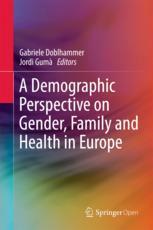

Most ebook files are in PDF format, so you can easily read them using various software such as Foxit Reader or directly on the Google Chrome browser.
Some ebook files are released by publishers in other formats such as .awz, .mobi, .epub, .fb2, etc. You may need to install specific software to read these formats on mobile/PC, such as Calibre.
Please read the tutorial at this link. https://ebooknice.com/page/post?id=faq
We offer FREE conversion to the popular formats you request; however, this may take some time. Therefore, right after payment, please email us, and we will try to provide the service as quickly as possible.
For some exceptional file formats or broken links (if any), please refrain from opening any disputes. Instead, email us first, and we will try to assist within a maximum of 6 hours.
EbookNice Team

Status:
Available4.5
8 reviewsThis open access book examines the triangle between family, gender, and health in Europe from a demographic perspective. It helps to understand patterns and trends in each of the three components separately, as well as their interdependencies. It overcomes the widely observable specialization in demographic research, which usually involves researchers studying either family or fertility processes or focusing on health and mortality.
Coverage looks at new family and partnership forms among the young and middle-aged, their relationship with health, and the pathways through which they act. Among the old, lifelong family biography and present family situation are explored. Evidence is provided that partners advancing in age start to resemble each other more closely in terms of health, with the health of the partner being a crucial factor of an individual’s own health. Gender-specific health outcomes and pathways are central in the designs of the studies and the discussion of the results. The book compares twelve European countries reflecting different welfare state regimes and offers country-specific studies conducted in Austria, Germany, Italy - all populations which have received less attention in the past - and Sweden. As a result, readers discover the role of different concepts of family and health as well as comparisons within European countries and ethnic groups.It will be an insightful resource for students, academics, policy makers, and researchers that will help define future research in terms of gender and public health.